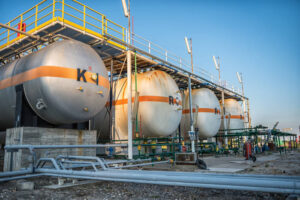Navigating the Current Natural Gas Market: Insights from Extreme Investor Network
In the ever-evolving landscape of the natural gas market, many investors find themselves asking: what’s driving the current trends? While national demand has remained predominantly light to moderate, factors impacting supply and consumption provide a deeper understanding of the market’s dynamics.
The Supply-Demand Balancing Act
Recent reports from NatGasWeather indicate that despite ERCOT-driven regional strength, a lack of sustained heat is hindering consumption levels. Cooling degree days are expected to hover around average, insufficient for driving a surge in demand for natural gas. This situation casts a shadow over potential market growth, as external conditions continue to limit consumer appetites.
Are Storage Builds and Production Growth Tipping the Scales?
The latest EIA report reveals a significant storage injection of 110 Bcf for the week ending May 9, aligning with expectations yet exceeding the five-year average of 83 Bcf. Currently, total U.S. inventories stand at 2,255 Bcf—a 2.6% increase over the five-year norm. While this margin isn’t drastic, it indicates an ample supply that outstrips current consumption trends.
Moreover, Lower 48 dry gas production has surged to 105.5 Bcf/d, marking a 4.7% year-over-year increase. In contrast, demand on Friday was reported at just 67.3 Bcf/d, a decline of 1.6% year-over-year according to Bloomberg New Energy Finance (BNEF). Although LNG feed gas flows are steady at 14.7 Bcf/d—providing a semblance of demand support—these figures do little to alleviate concerns about domestic oversupply.
Will the Market Brace for Further Downside?
Natural gas futures have seen a downward trend, closing lower for four consecutive sessions. This decline is indicative of the market’s unease surrounding sluggish demand and growing inventories. The Edison Electric Institute noted a 2.8% year-over-year decrease in U.S. power output for the week ending May 10, underscoring a decline in utility gas demand. Although we witnessed a minor uptick in gas-fired generation—primarily due to reduced renewable output—it’s not sufficient to shift the prevailing market fundamentals.
As production remains steady amidst unyielding weather forecasts, the burden of rebalancing the market now lies squarely on the demand side.
Future Outlook: A Bearish Stance Until Demand or Supply Shifts
Looking ahead, the market appears bearish until there is a noticeable shift in either demand or supply dynamics. For investors, understanding these variables is crucial in navigating the complexities of natural gas trading. At Extreme Investor Network, we continually analyze these trends to provide our readers with timely and actionable insights. While the market may currently feel uncertain, informed decision-making can help position investors advantageously for when conditions change.
Stay tuned as we keep you updated on market shifts, strategic trading tips, and the latest news affecting the natural gas sector. Remember, staying informed is your best investment strategy!

